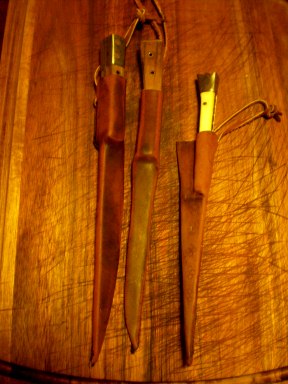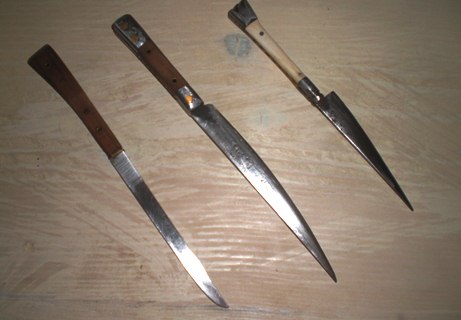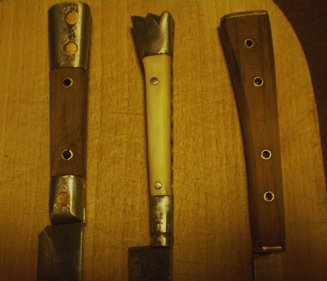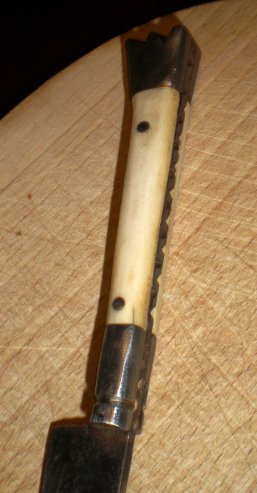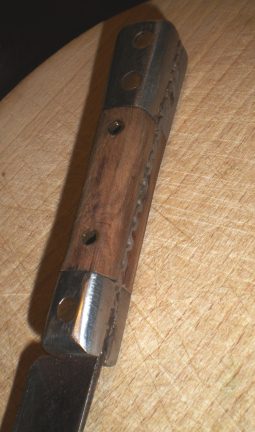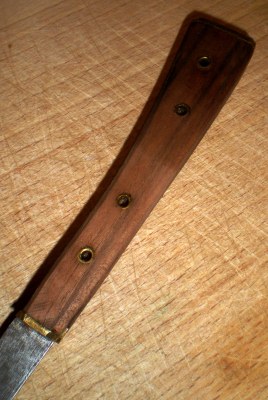Posts: 399 Location: Slovakia
Tue 04 Sep, 2012 10:59 pm
thanks for kind words. I have to say, Mr Todeschini´s work is a great source of inspiration, and several pictures of the works he posted on this forum are hanging in my workshop:)
As for the lessons learnt the biggest knife (the middle one, on the second picture) ended up too "heavy". I´ve made the scales too thick, so in the end the whole handle has somewhat "square"
cross-section, whereas historical peaces seem to be more "flat". Also, I feel it would handle better, were it little bit less robust.
the other thing concerns fitting of metal and wooden/bone parts of the scales: gapping sebetweenhem are far too wide, and it´s visible on a delicate small piece as an eating knife. Next time I shall spend much more time with details.
In the end, I also did not like the combination of iron scales and brass rivets on the "robust" knife. The easiest option would be using rivets from the same metal, but I wanted to make it little bit more decorative. Let´s see, I will probably check some books, not to re-invent the wheel.
Last but not least, despite everything I´ve read on this forum, I´ve tried to make scabbards for a single layer of thick leather, but it did not work well. They are too "rough". So next time: two layers, with thinner, finer leather on the outer side.
